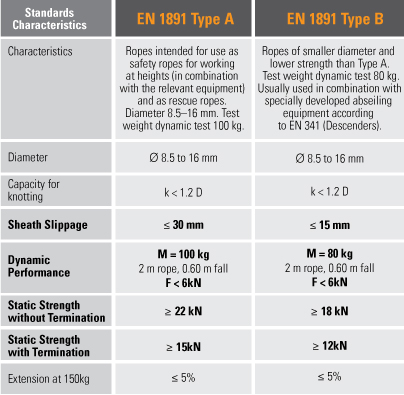Yale Blaze is a very popular climbing line - tree climbers who acclimatize to the 11mm diameter remain very loyal to the rope and virtually always replace like-for-like when their Blaze climbing line finally does give up the ghost.
But many Blaze diehards are unaware of the fact that Yale Blaze has a slightly lower 'Type B' rating according the EN static rope specifications… and Type B ropes do require a bit more care and attention by the user.
Before we begin it is important to understand that 'standards' are manufacturing standards. They are not user standards.
Arborist climbing line standards, relevant to the New Zealand market, are; the European standard for static rope EN 1891 Type A (and B), the Australian standard for rescue ropes AS 4142.3 or the American Cordage Institute standard CI 1801.
Many, more specialized, SRT ascent lines often fall outside the typical static line or rescue rope standards.
European Norm EN 1891 is the most commonly applied aerial arborist climbing line standard in New Zealand. When no mention is made of the 'Type' following the EN code, by default it usually refers to Type A.
Characteristics of both EN 1891 Type A and Type B are virtually the same except for a couple of notable differences; namely, sheath slippage, dynamic performance, static strength with and without termination - see comparison chart below.
Reduced slippage of the sheath on Type B Yale Blaze makes the rope better suited to descending when using a figure 8 or mechanical device since there is less bunching of the sheath in front of the abseil brake as you descend.
Low sheath slippage is possibly the reason why Yale Blaze is the rope of choice for Kiwi Unicender and Spiderjack users.
The other major differences between the two are the minimum static strength without termination; 18kN (Type B) versus 22kN (Type A), static strength with termination (12kN for Type B versus 15kN for Type A) and the load used to test the dynamic performance; 80kg for Type B and 100g for Type A.
The EN 1891 dynamic performance test involves testing a 2m length of line with figure eight knots tied at each end. A drop with a fall factor of one (0.60m) is applied five times. The rope must withstand all five falls. Type A ropes are tested with a load of 100 kg on-board. Type B ropes are tested with a load of 80 kg.
Type A ropes are stronger and provide better dynamic performance but Type B ropes are usually lighter in weight.
Yale Blaze users need to be cognizant of the fact that Type B lines do require more care and attention. For this reason, the Yale line is better suited to more experienced climbers in Treetools opinion.

